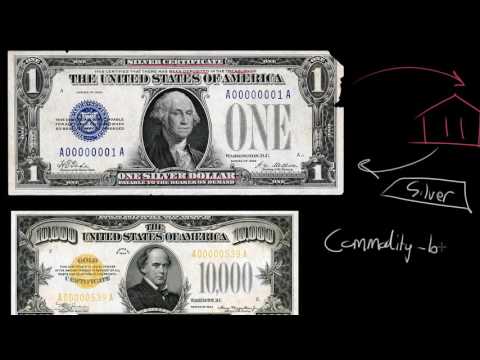

Using repo, banks raise the necessary capital to increase their lending capacity. This ensures liquidity for the bank and proper cash flow into the market. But, in the case of inflation, RBI uses reverse repo to absorb funds from the market to regulate the lending capabilities of commercial banks.
A simple example would be, suppose a kg of apple cost Rs.100 in 2019 and it cost Rs.110 in 2020, then there would be a 10% increase in the cost of a kg of apple. In the same way, many commodities and services whose prices have raised over time are put in a group and the percentage is calculated by keeping a year as the base year. The percentage of increase in prices of the group of commodities is the rate of inflation. The monetary policy committee of the RBI that last met in December 2020 maintained continuity in the reverse repo rate. Disinflation is the slowing down the rate of inflation by controlling the amount of credit available to consumers without causing more unemployment.
Disinflation
When it comes to long-term investments, spending money now for investments can allow you to benefit from inflation in the future. However, a healthy inflation rate (2-3%) is considered positive because it directly results in increasing wages and corporate profitability and maintains capital flowing in a growing economy. Inflation happens when the price of goods and services increase, while deflation takes place when the price of the goods and services decrease in the country. The percentage of deposits which commercial banks are required to keep as cash according to the directions of the central bank. Deflation is different from disinflation as the latter implies decrease in the level of inflation whereas on the other hand deflation implies negative inflation.
In contrast, deflation gives the RBI room for cutting interest rates. To increase the liquidity in the market RBI reduces the reverse repo rate, which enables businesses and industries to borrow loans for investment purposes. Repo rate is the repurchasing option rate at which commercial banks borrow money, overnight, from the central bank, i.e. Deflation is the financial time period used to describe the drop in costs for goods and providers.
The central bank takes the contrary position in the event of a fall in inflationary pressures. Repo and reverse repo rates form a part of the liquidity adjustment facility. Some monetarists hold that central banks should target only one parameter – inflation – since simultaneously targeting other goals leads to internal contradictions and fuzziness. It has caused several individuals to invest in cryptocurrencies, which are being touted as a hedge against inflation. Many of these cryptos have appreciated significantly in value over the last couple of years. With good returns, the value of your investment increases over time, helping you effectively combat the rising prices caused due to inflation.
Real GDP is calculated using a GDP value deflator, which is the difference in costs between the current yr and the base year. For instance, if costs rose by 5% since the base year, the deflator can be 1.05. However, a widespread fall in costs presents a very severe, unfavorable state of affairs for financial development and stability within the lengthy-time period. Over time, the components that contribute to deflation are disastrous for shoppers and for the economic system. Disinflation occurs when the increase in the “shopper price stage” slows down from the earlier interval when the prices have been rising. The U.S. economic system skilled certainly one of its longest durations of disinflation from 1980 through 2015.

Examples of short-term investments are money market accounts, short-term mutual funds, peer-to-peer lending, and treasury bonds. One of the RBI’s key responsibilities is to keep inflation in check. The RBI aims to make loans costlier by increasing the lending rates and thus discouraging borrowing which in turn, discourages spending. As people spend less money, prices stop rising and inflation moderates.
Difference Between Inflation and Deflation
Is quite excited in particular about touring Durham Castle and Cathedral. All efforts have been made to ensure the information provided here is accurate. Please verify with scheme information document before making any investment. One way or another, both of these will cause inflation after a period. Furthermore, deflation allows lenders (i.e., bond buyers) to repay borrowers (i.e., bond issuers) with cash that has lost value over the bond’s life.

The index of analyzing inflation and deflation rates varies from country to country. To comprehend the terms deflation and disinflation, one must first comprehend the definition of inflation, which is defined as a scenario in which the prices of an economy’s output rise. Disinflation occurs when the pace of inflation decreases and continues until it reaches zero, but deflation occurs when the rate is less than zero. A drop in both money and credit in the economy without a relative fall in economic output may still see the prices of all goods diminish. Periods of deflation most commonly occur after long periods of artificial monetary expansion.
Financial Markets, Deflation and Disinflation
There is no meaning that price stability is absence of inflation. Rather, low level of inflation is a welcome factor that may stimulate the economy. Deflation is generally caused by reduced demand and consumption in the economy.
What is deflation vs recession?
Differences − Recession and Deflation
Deflation is measured by a decrease in the Consumer Price Index. A recession often starts not long after an economy hits its peak and continues until it reaches its minimum. Deflation is characterized by a broad decrease in pricing for products and services.
Repo rate is the rate of interest at which commercial banks in India borrow money from the Reserve Bank of India. Commercial banks are required to deposit securities such as government bonds or treasury bills as collateral to avail these loans from the central bank of the country. Reverse repo rate is generally lower than the repo rate.In a bi-monthly monetary meet held on April 7, 2021, RBI announced that the current repo rate has been kept at 4% and the reverse repo rate at 3.35%. This is the fifth time in a row that these crucial rates haven’t been revised. In this case, RBI will reduce the repo rate to help banks borrow more and make loans available to the public at reduced rates. Now, if the country’s economy is experiencing inflation, RBI will increase the reverse repo rate to limit borrowings by commercial banks.
Types of Deflation
The economic system is experiencing deflation when the change in prices in a single interval is lower than the following, revealing that the CPI index has declined. Deflation is a lower in the general worth degree of products and providers in a country. Disinflation isn’t necessarily bad for the stock market, as it may be during periods of deflation. A recession or a contraction in the business cycle may result in disinflation. The definition of price stability also tells us that low level of inflation is preferable to deflation. Price stability is the most important objective of central bank’s monetary policy.
- Central banks aim to keep the overall price level stable by avoiding situations of severe deflation/inflation.
- Inflation and deflation are two commonly used terms in Macroeconomics.
- Deflation is caused when there is fierce competition in the market among competitors, which causes aggressive competition in the market.
- Stagflation- A condition of slow economic growth and relatively high unemployment.
- Hyperinflation often occurs when there is a large increase in the money supply, which is not supported by growth in Gross Domestic Product .
Several primary reasons could cause an economy to experience disinflation. Similarly, a contraction in the business cycle or a recession can also cause disinflation. If prices of goods are coming down, business people will stop investment as there is the risk of loss. In this way, deflation discourages many desirable factors in the economy – production, investment, employment and thus economic growth. Reduction in cost of production and technological advancements are the leading cause of increased production. In this type of deflation, consumers see lower prices, higher output, higher productivity, higher profits, and hopefully higher real wages.
What is Deflation?
The term “Deflation” is often mistaken with “disinflation.” While deflation refers to a decrease in the prices of goods and services in an economy, disinflation is when inflation increases at a slower rate. Deflation deflation definition is generally the decline in the prices for goods and services that occur when the rate of inflation falls below 0%. Deflation will take place naturally, if and when the money supply of an economy is limited.
This distinction is due to the fact that deflation is a highly damaging condition for the economy and financial markets. Stock prices are expected to perform poorly during periods of deflation. Keep in mind that when inflation is strong, disinflation is a good thing.
What is deflation and why is it bad?
Deflation is when the prices of goods and services decrease across the entire economy, increasing the purchasing power of consumers. It is the opposite of inflation and can be considered bad for a nation as it can signal a downturn in an economy, leading to a recession or depression.
Countries like US and Japan are designing monetary policies to achieve a target level of inflation. Deflation is referred to as the decrease in the price of goods and services. In such a situation the purchasing power of the population increases. Inflation and deflation are two commonly used terms in Macroeconomics.
However, sometimes reducing some ingredients may also have a positive impact on one’s health. Hence, it helps to boost their profit margins stealthily while also retaining the company’s Market share. Moreover, small reductions in product quantity often go unnoticed by most consumers, as long as the old price is maintained. Let us look at some of the points of difference between inflation and deflation. The economists have suggested that inflation results from sudden overspending by people after the lockdown, a short supply of labor, and a breakdown in the supply chain. In simple language, deflation is defined as a decrease in general prices.
What is deflation vs depression?
For any episode, we define a deflation as a negative average inflation rate and a depression as a negative average real output growth rate. Throughout, we restrict attention to moderate inflations, those with average annual inflation below 20 percent.
